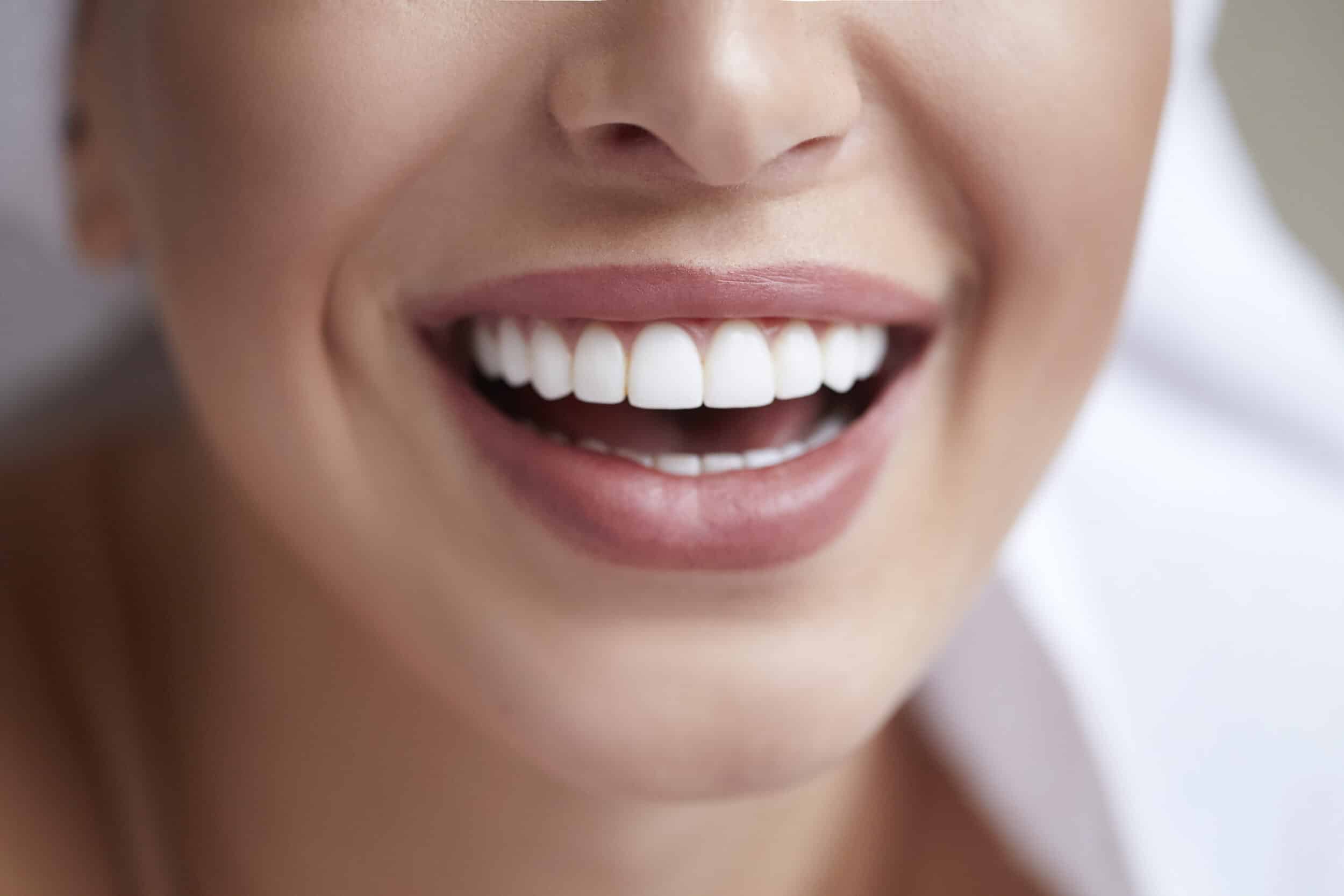
Everyone wants to have shiny, white teeth, but it's hard to give up our morning coffee, those tasty raspberries, and that glass of red wine with dinner. Unfortunately, all of those foods and beverages conspire to leave stains on our teeth – so does the simple passage of time. The end result can be dull, dingy teeth with a yellow tint.
If these issues sound familiar to you, it might be time to schedule a professional teeth whitening appointment at Implant & General Dentistry of Long Island. Dr. Dean Glasser, a Columbia University Dental School professor, and Dr. Renee Glasser, a Stony Brook University School of Dental Medicine professor, offer advanced cosmetic treatments to help you feel more confident when you smile.
Your Teeth Whitening Options
At Implant & General Dentistry of Long Island, we offer both in-office and at-home professional teeth whitening services.
These options utilize carbamide peroxide and hydrogen peroxide to break down the pigment that has become lodged in the enamel layer of our teeth. They can whiten your teeth up to seven shades!

Common Causes of Teeth Stains
There are two aspects of the enamel – the protective outer layer of the teeth – that surprise people.
First, despite being the hardest tissue in the human body, tooth enamel is slightly porous. This enables the teeth to, in effect, breathe. After all, our teeth are living tissue. That characteristic, however, also allows staining agents to penetrate and become lodged in the enamel.
Second, each person's enamel color is slightly different. Some people's enamel is a little darker, for some, it is more prone to staining, etc.
While anyone's teeth can develop stains, certain factors increase the likelihood, including:
- Foods: Raspberries, blueberries, blackberries, and even dark chocolate all contain pigments that can make their way into tooth enamel.
- Drinks: Coffee, tea, red wine, darker fruit juices, and cola drinks leave stains.
- Smoking: Nicotine can cause the enamel to become yellow.
- Genes: Darker enamel tones are typically inherited from your parents.
- Drugs: Tetracycline, a popular antibiotic used especially in the 1960s, was found to discolor the dentin in teeth. There are now recommendations not to use tetracycline in children due to this problem.
- Fluorosis: If a person ingests too much fluoride, it can cause fluorosis, which stains the teeth a grey color.
The last two items on that list involve another type of staining that occurs in the dentin, the inner portion of the tooth. This staining usually results from a drug reaction — specifically, tetracycline is the main culprit — and it cannot be whitened.
For stains in the dentin, Dr. Glasser places porcelain veneers over the front surfaces of the teeth. Veneers cover stained interior teeth and can cover other imperfections, such as chips and misshapen teeth.
How Does Teeth Whitening Remove Stains?

The concept behind teeth whitening isn't all that different than removing a stain from a shirt. Stains work their way into the enamel, which is somewhat porous. The active ingredients in whitening gels penetrate the enamel and break up the pigment in the stains. Our professional teeth whitening options lighten your teeth anywhere from five to seven shades, depending on your degree of staining.
What Happens During the Teeth Whitening Procedure?
Dr. Glasser offers both in-office teeth whitening and at-home whitening.
For our in-office whitening, we use silicone trays filled with a 22-25% carbamide peroxide whitening gel. Before we apply the trays to your teeth, we protect your lips and gums with a barrier. We then place the trays on your teeth and activate the gel using a blue LED light. The process takes approximately one hour, and your teeth are dramatically whiter at the end.
For our at-home teeth whitening, we take impressions of your teeth to create custom-fit trays that fit your teeth perfectly. These trays provide a superior fit that you won't find in store-bought whitening kits. We then provide you with professional-strength hydrogen peroxide gel, along with detailed instructions on how to use your kit at home.
At home, you fill the trays with the whitening gel and wear them for 30 minutes. You can do this at night while watching TV or reading a book. You follow this plan for two weeks, and your whitened teeth should be about the same shade as we can achieve in-office.
How Is Professional Whitening Different From OTC Whitening Products?
Sometimes, patients wonder why they should use Dr. Glasser's professional teeth whitening options instead of purchasing an over-the-counter kit from the drugstore. There are two very important differences between the teeth whitening we offer in our Melville office and the whitening kits you can buy at the grocery store.
First, we use far stronger concentration whitening gels. Professional whitening gel is stronger because it is used by trained dental hygienists, so the possibility of improper application is reduced. That's why home whitening kits have to be far weaker, in case the gel gets on the person's gums and lips.
Second, we custom-fit the trays we use for our in-office whitening to your teeth, ensuring a precise fit. Over-the-counter kits typically feature one-size-fits-all trays or strips that are applied to the teeth. This means the whitening gel can be applied haphazardly. That can deliver inconsistent whitening, and if you're not careful, it can burn your gums.
How Long Will My Teeth Stay White?
As you would expect, there is no correct answer here. If you never drink a cup of coffee again or have a glass of wine, your teeth will stay whiter for longer, but who wants to do that?
The reality is that your teeth will become stained again, although diligent twice-daily brushing with whitening toothpaste can help. Maintaining your twice-yearly professional cleanings and exams with Dr. Glasser is also beneficial.
You can expect that your teeth will maintain their brighter, whiter appearance for at least a year or so. When your teeth become a little dingy again, simply return and, in an hour, they'll look bright and white once more.
Professional Teeth Whitening Candidates
You are likely a good professional teeth whitening candidate if:
- Your teeth and gums are healthy.
- You do not have significant tooth sensitivity.
- You are looking to brighten natural enamel.
This treatment is most effective for surface-level staining caused by food, drinks, or tobacco. If you have untreated cavities, gum disease, or restorations on front teeth, your dentist may recommend addressing those concerns first. A consultation can determine if whitening is appropriate for your dental condition and cosmetic goals.
Is Teeth Whitening Safe? Will It Make My Teeth Sensitive?
Teeth whitening has been performed for over 30 years, and there is no documented case of damage to a patient's teeth resulting from this procedure. These are safe, effective treatments.
Teeth whitening can cause your teeth to be sensitive to hot and cold temperatures for a brief period after your procedure, but this sensitivity typically passes quickly.
If you have overly sensitive teeth, please let us know in advance. We can then desensitize them before applying the whitening gel.
Why Choose Implant & General Dentistry of Long Island?
Patients trust Implant & General Dentistry of Long Island for teeth whitening because of the personalized care and clinical excellence provided by Dr. Dean Glasser and Dr. Renee Glasser.
Dr. Dean Glasser brings over 30 years of experience in cosmetic and implant dentistry and holds prestigious memberships in the American Academy of Cosmetic Dentistry and the American Academy of Implant Dentistry. Dr. Renee Glasser's background in general dentistry and compassionate approach also help patients feel at ease throughout their treatment.
Together, they deliver results that are both safe and natural-looking, using advanced techniques to brighten smiles in a comfortable, patient-focused setting.
FAQs
Teeth whitening treatments are meant to work on natural enamel. They will not lighten the color of veneers, crowns, or tooth-colored fillings.
If these restorations are visible when you smile, they may stand out after whitening. In such cases, your dentist might recommend replacing them after whitening for a more even result. If your restorations are located in less noticeable areas, whitening can still be a good option to improve your overall smile appearance.
It's a good idea to schedule teeth whitening at least two weeks ahead of a special event. This allows time for your teeth to reach their full brightness and for any temporary sensitivity to subside.
If you're considering multiple whitening sessions or need additional dental care first, starting earlier gives your provider more flexibility. Planning ahead ensures you get the best result without last-minute discomfort or complications before weddings, photoshoots, interviews, or other major occasions.
Most people can safely whiten their teeth every 6 to 12 months with professional supervision.
Touch-up treatments may be needed sooner if you frequently consume staining substances like coffee, red wine, or tobacco. However, keep in mind that over-whitening can lead to enamel damage or gum irritation.
Your dentist can customize a maintenance schedule that keeps your smile bright without compromising your oral health or increasing sensitivity.
Teeth whitening typically works best on yellow stains, which are usually caused by aging or dietary habits. Brown stains can also respond to treatment, though results may vary. Gray discoloration, often associated with medications such as tetracycline or internal damage, tends to be more resistant to whitening. In cases of severe or uneven staining, your dentist may recommend alternative cosmetic options, such as veneers or bonding, to achieve more uniform and noticeable results.
Schedule a Teeth Whitening Consultation Today
Do you want to experience the benefits of professional teeth whitening, either in our office or from the comfort of your home? The team at Implant & General Dentistry of Long Island is here to help. Contact us today by calling 631-423-6767.
